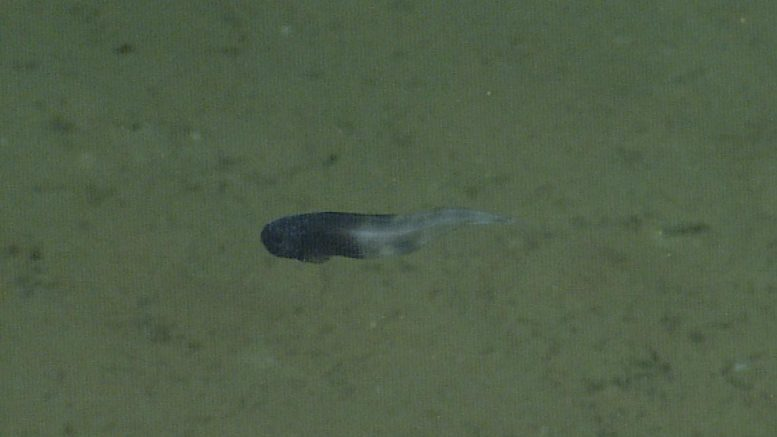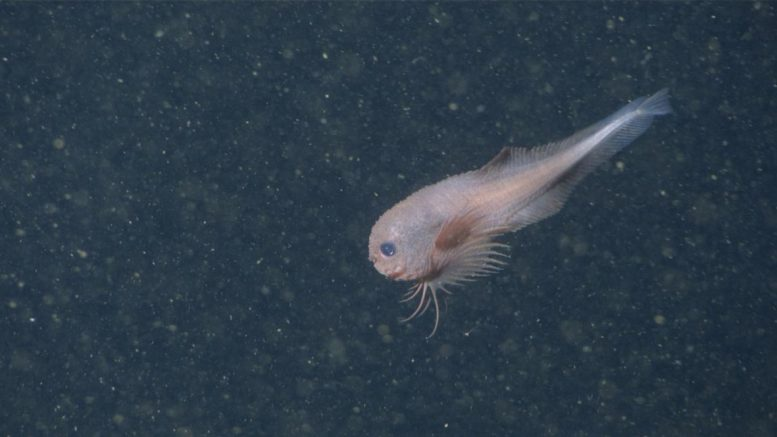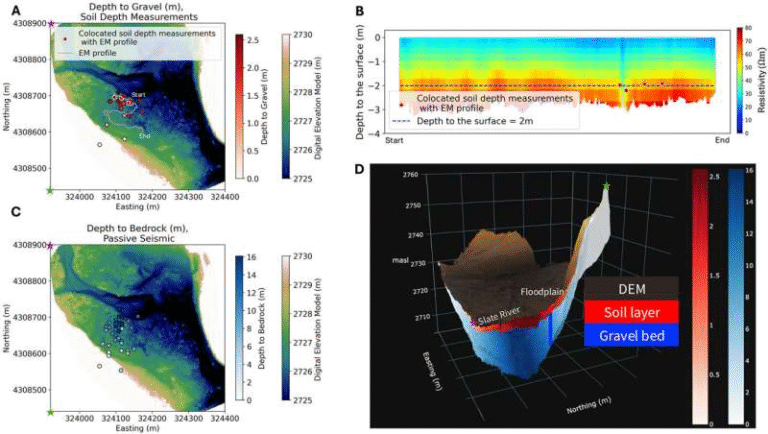Scientists Discover Three New Deep-Sea Snailfishes off the Pacific Coast

Scientists from SUNY Geneseo, in collaboration with the Monterey Bay Aquarium Research Institute (MBARI), the University of Montana, and the University of Hawaiʻi at Mānoa, have announced the discovery of three new species of deep-sea snailfishes. These fishes were found thousands of meters below the ocean’s surface in the abyssal zone off the coast of California. The discovery adds important knowledge to marine biology and highlights how much of the deep sea remains unexplored.
The three new species are the bumpy snailfish (Careproctus colliculi), the dark snailfish (Careproctus yanceyi), and the sleek snailfish (Paraliparis em). Each of these species was documented and described in detail using a combination of morphological studies, micro-CT imaging, and genetic analysis.

Where the New Snailfishes Were Found
The newly discovered fishes were observed and collected at depths ranging from 3,268 meters (10,722 feet) to about 4,119 meters (13,500 feet) in the eastern Pacific Ocean. These depths are part of the abyssal seafloor, a region defined by permanent darkness, near-freezing temperatures, and immense water pressure.
- The bumpy snailfish was observed during a 2019 MBARI expedition in the outer reaches of Monterey Canyon, around 100 kilometers (62 miles) offshore of Central California. It was spotted at a depth of 3,268 meters.
- The dark snailfish and sleek snailfish were collected near Station M, an important MBARI-operated research site offshore of Central California, at depths close to 4,000 meters (13,100 feet).
These discoveries were made possible thanks to advanced research tools, including MBARI’s remotely operated vehicle (ROV) Doc Ricketts and the human-occupied submersible Alvin. The ROV and submersible were equipped with high-definition cameras and suction samplers, allowing scientists to both observe and collect delicate deep-sea animals without causing damage.
Detailed Look at the Three New Species
Bumpy Snailfish – Careproctus colliculi
- Appearance: This species is pink in color, with a round head, large eyes, and wide pectoral fins. Its pectoral fins feature 22 rays, and the uppermost rays are long and distinct.
- Unique Trait: Its body surface has a noticeable bumpy texture, giving the species its common name.
- Size: The only collected specimen, an adult female, measured about 9.2 centimeters (3.6 inches) in length.
- Other Features: It possesses eight caudal rays, a ventral suction disk, and well-developed pterygiophores.
- Discovery Notes: So far, this is the only confirmed observation of the species, although archived MBARI video footage from 2009 off the coast of Oregon suggests it may have been seen before but mistaken for the bigtail snailfish (Osteodiscus cascadiae).
Dark Snailfish – Careproctus yanceyi
- Appearance: The body of this species is entirely black with a rounded head and a horizontal mouth.
- Size and Shape: It has 22 pectoral-fin rays, a small gill opening located above the pectoral fin, and six branchiostegal rays.
- Suction Disk: Present, but it is smaller compared to other snailfishes, occupying less than 3% of its standard body length.
- Collection Site: Gathered by researchers near Station M at about 4,000 meters deep.
Sleek Snailfish – Paraliparis em
- Appearance: This fish has a long, slender, laterally compressed body that is completely black.
- Unique Trait: Unlike many other snailfishes, it completely lacks a suction disk.
- Other Features: It has five branchiostegal rays, a single pectoral-fin radial, and an anteriorly placed anus. The jaw is prominently angled, giving it a distinctive profile.
- Name Origin: The species was named Paraliparis em in recognition of Station M, the research site that has contributed decades of valuable data on deep-sea ecosystems.
How the Research Was Conducted
The identification of these species was not based solely on visual observation. Scientists used a comprehensive, three-step approach:
- Morphological Study: Detailed measurements and comparisons were made of the fishes’ body shapes, fin ray counts, head features, and suction disks.
- Micro-CT Imaging: Micro-computed tomography allowed researchers to look at the internal skeletal structures of the fishes in detail.
- Genetic Sequencing: DNA was extracted and analyzed, focusing on the mitochondrial COI gene, which helped place these species in the snailfish family tree.
This combined approach confirmed that all three specimens represented species previously unknown to science.

Placement in the Snailfish Family Tree
- Bumpy Snailfish (Careproctus colliculi): Fits into the “Osteocareprocta clade,” showing similarities with Careproctus continentalis, C. discoveryae, C. longipectoralis, and Osteodiscus cascadiae.
- Dark Snailfish (Careproctus yanceyi): Appears more genetically distinct and may represent a separate lineage within Liparidae.
- Sleek Snailfish (Paraliparis em): Found to be closely related to Paraliparis wolffi (from the Indian Ocean) and other northeastern Pacific species of the Paraliparis Clade I.
Why Snailfishes Are Special
Snailfishes (family Liparidae) are one of the most fascinating groups of deep-sea fishes:
- Global Presence: There are more than 400 known species, living everywhere from shallow tide pools to the deepest ocean trenches.
- Unique Adaptations: Many species have a ventral suction disk on their underside. In shallow water species, this helps them cling to rocks, kelp, or seaweed. In the deep sea, it may allow them to attach to the seafloor or even hitch rides on larger animals like crabs.
- Extreme Survivors: The deepest-living fish ever recorded is a snailfish. They can survive under pressures exceeding 1,000 times atmospheric pressure and in temperatures near freezing. Their soft, gelatinous bodies and specialized physiology make them highly adapted to extreme conditions.
Broader Importance of This Discovery
These new discoveries highlight several important points:
- Biodiversity in the Deep Sea: The deep sea is the largest habitat on Earth, yet it remains the least explored. Every new discovery emphasizes how little we know about life far below the surface.
- Climate and Human Impact: With deep-sea ecosystems facing threats such as climate change, mining, and pollution, documenting species diversity now is essential for detecting changes and guiding conservation.
- Scientific Collaboration: The discoveries were made possible by a strong partnership between MBARI and university researchers. The collaboration combined MBARI’s technological capabilities (ROVs, submersibles, imaging tools) with academic expertise in taxonomy, morphology, and genetics.
- Building a Baseline: MBARI and partners have discovered more than 300 new species over the past 38 years. These discoveries form a baseline understanding of ocean biodiversity, helping us measure and track how human activities affect marine ecosystems.
Other Fascinating Discoveries by MBARI
MBARI has previously uncovered many unusual deep-sea animals, including the harp sponge, a carnivorous sponge that traps small prey, and the mysterious “mystery mollusk”, a unique shell-less creature. Each discovery shows how diverse and surprising life in the deep sea can be.
Final Thoughts
The identification of the bumpy snailfish, dark snailfish, and sleek snailfish provides a reminder that Earth’s oceans remain full of surprises. Even in areas near long-studied research sites like Monterey Canyon and Station M, scientists continue to find new life forms. These discoveries deepen our understanding of evolution, adaptation, and biodiversity in the most extreme environments on the planet.
Research Reference: Descriptions of Three Newly Discovered Abyssal Snailfishes (Liparidae) from the Eastern Pacific Ocean – Ichthyology & Herpetology, August 27, 2025





